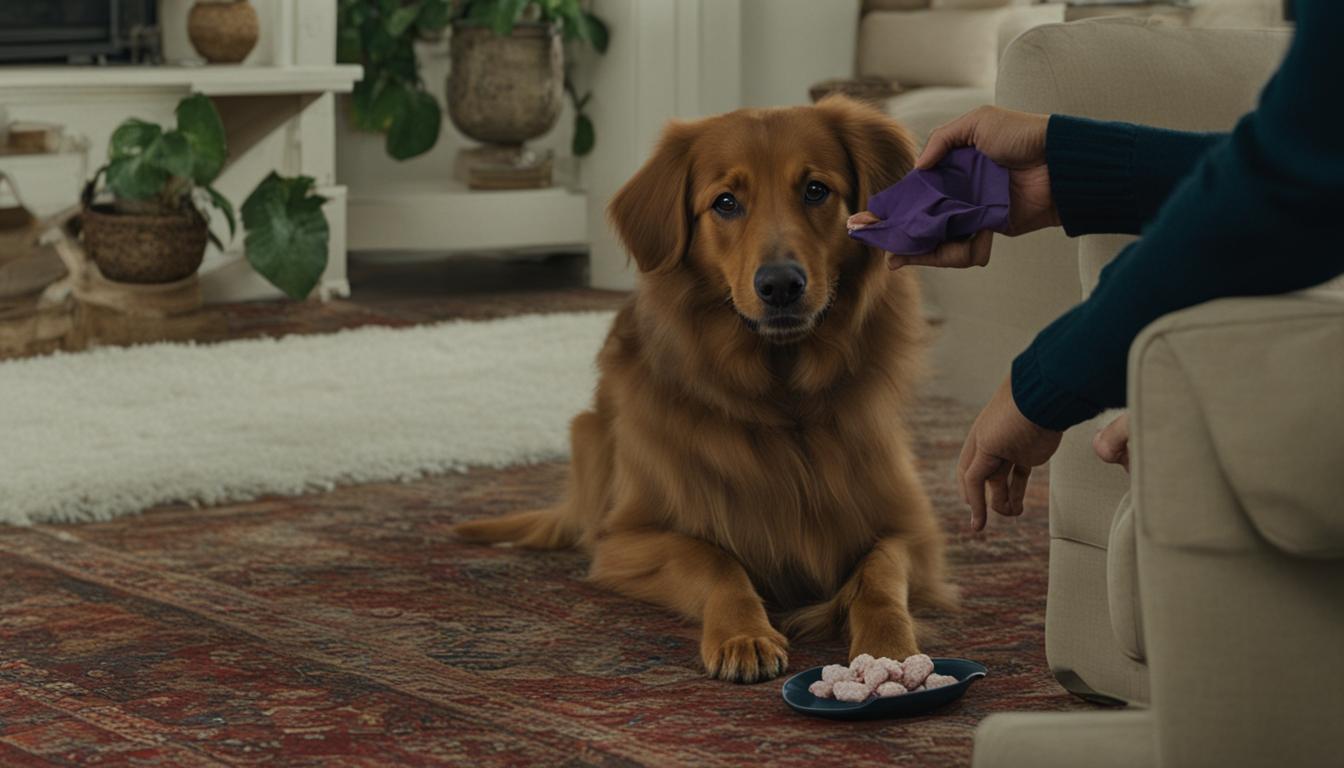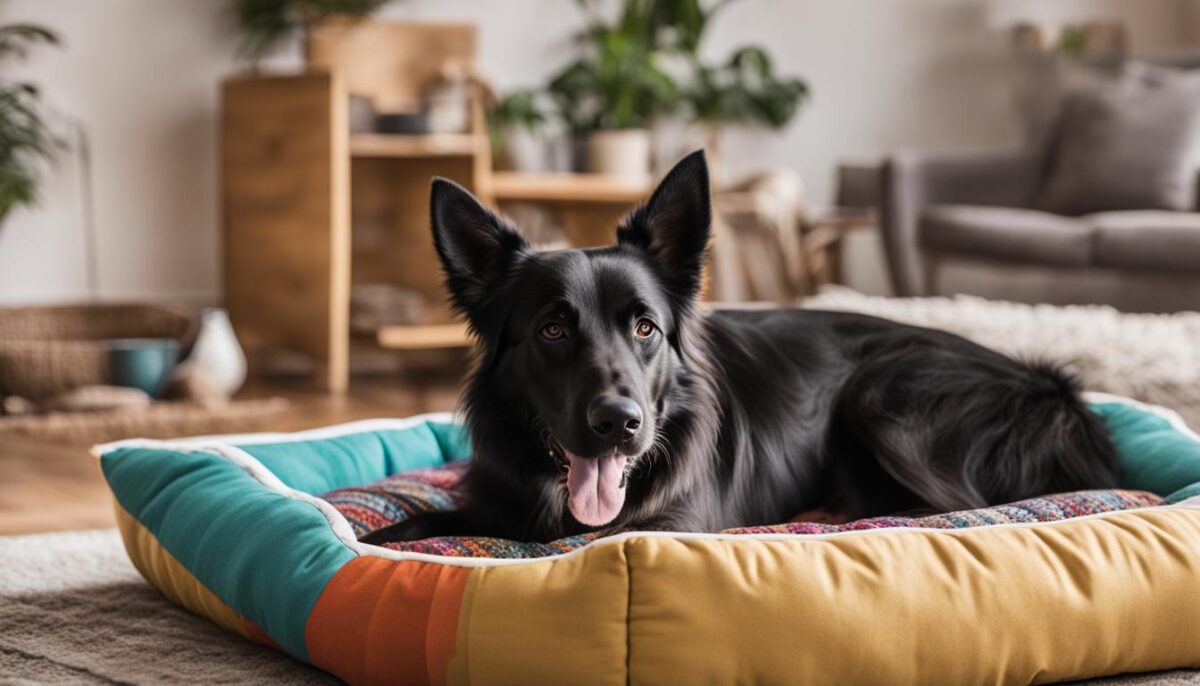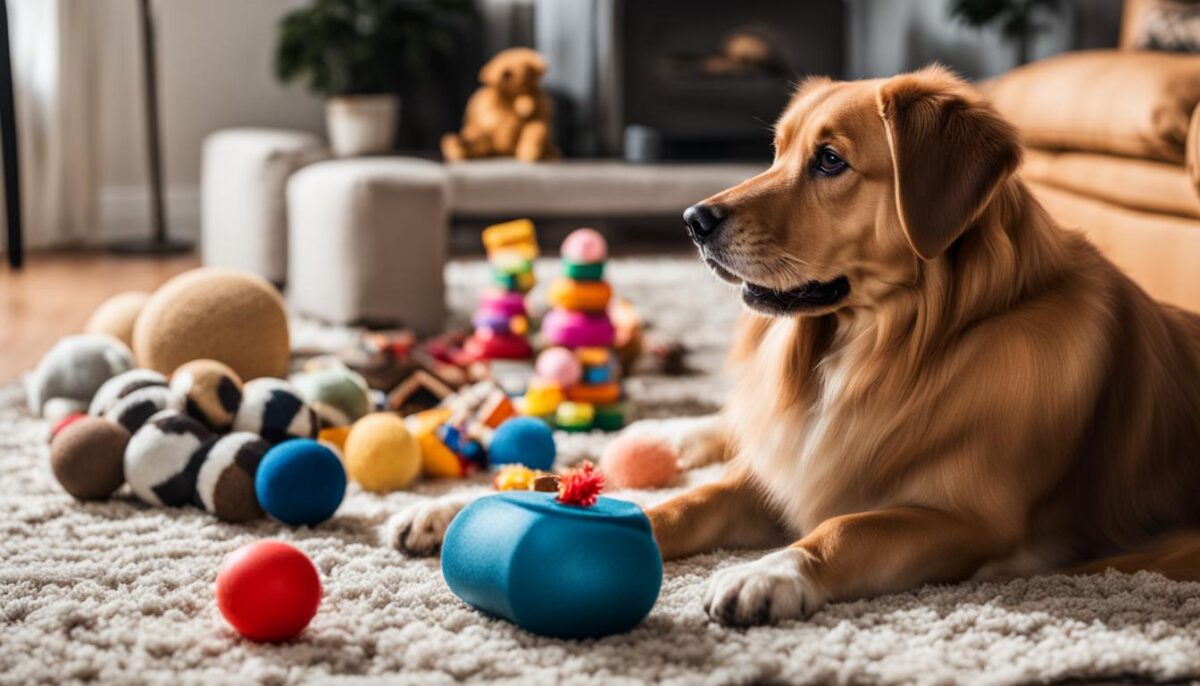Hey there! Do you want your furry friend to learn how to stay off the couch and other furniture? It’s important because some furniture can get hurt if dogs are on them. Plus, sometimes it’s not good for their behavior, too. Teaching your dog home pet rules can help your house stay nice and make sure everyone’s space is happy.
It might take a few days, but starting early is best. This way, your dog won’t think it’s okay to jump up whenever they want. Everyone in your home should follow the same rules to help your dog learn. And don’t worry, with some good dog training tips, you can help them understand in a kind way.
When your pooch knows how to keep off the furniture, it’s cozier for everyone. Let’s get started on some simple ways to teach your dog to have fun and be safe without hopping onto the sofa!
Key Takeaways
- Start teaching your dog early so they know what’s allowed.
- Use clear home pet rules for your dog to follow.
- Everyone in the house needs to help with dog training.
- Keep to the same rules so your dog isn’t confused.
- Fun furniture training for dogs can make your home better for everyone!
Understanding the Attraction to Furniture
Have you ever wondered why dogs like furniture so much? Just like you, dogs love to be comfy. Couches and beds are soft and just perfect for a good nap. Picture yourself snuggling up on a big, fluffy pillow—that’s what your furry friend feels when they jump on the furniture!
But there’s more to dog behavior than just looking for a cozy spot. Dogs might climb on furniture for a good view. From the couch, they can see who’s coming and going, or keep an eye out for when dinner’s ready. It’s a bit like their own lookout tower!
Yet, when dogs make a habit of lounging on furniture, they can leave behind hair and sometimes scratch things up. They might even think the couch is all theirs, not wanting to share with others. We want to help them find their own comfortable resting spots for dogs that are just as lovely.
Let’s peek at some reasons dogs find furniture so irresistible.
- Softness: Furniture is often softer than the floor, making it a comfy place to relax.
- Warmth: Your couch and bed hold warmth, which can be especially inviting for dogs.
- Smell: Your scent is on the furniture, and your dog loves to feel close to you.
- Height: Being up high helps dogs see the world around them better.
We can create special spots for our dogs that make their tails wag with joy! Maybe a plush dog bed or a blanket in a sunny spot can become their favorite place in the house.
| Furniture | Reasons Dogs Love It | Drawbacks | Alternatives for Dogs |
|---|---|---|---|
| Couch | Super soft and great for napping | Hair and potential damage | Dog bed with familiar scents |
| Bed | Warm and cozy with your scent | Possessive behavior | Cozy corner with their own blanket |
| Chair | Great view to see everything | Can be dangerous if they jump down | Elevated dog lookout platform |
By understanding why our dogs are so fond of furniture, we can guide them to places that are just for them. This way, everyone is happy, and your furniture stays nice and neat!
How to Train a Dog to Stay Off Furniture
Teaching “off” is an important part of dog obedience training. When your dog jumps on the furniture, firmly say “off”. If they jump down, give them a treat or their favorite toy. This will show them that being on the ground is good!
You can also try furniture access training with barriers. Block the furniture with things like baby gates so your dog can’t get up there. After a while, they will learn that the couch is not a place for them.
Sometimes you might let your dog on the furniture. If so, teach them “up”. This command means they can only get on when you say it’s okay. This helps them know when it’s fine and when it’s not.
- Use treats: Lure your dog off the furniture and then praise them.
- Barriers: Prevent access with gates or pillows.
- Special place: Give your dog their own bed to keep them off the furniture.
Have a special bed for your dog in the room. They will love having their own spot! It will make them less interested in the furniture.
Creating a Positive Environment for Your Dog
Making your home dog-friendly is important. You want your dog to be happy and comfy without jumping on the sofa or chairs. Here are some easy ways to help your dog feel right at home.
Invest in a Comfy Dog Bed
Choosing dog beds that are cozy will keep your pup off your furniture. Older dogs really like these soft beds because they are gentle on their joints. These nice beds can also look good in your house and be put in a spot that’s just for your dog.
Use Treats and Toys Strategically
Using positive reinforcement is a smart way to train your pup. If you put your dog’s favorite toys and treats near their bed, they will like their bed more than your couch! Sometimes, when you’re out, you can put up baby gates or special mats to stop your dog from hopping on the furniture.
| Dog Bed Options | Benefits | Perfect For |
|---|---|---|
| Orthopedic Memory Foam Bed | Supports joints and muscles | Older dogs or dogs with arthritis |
| Donut Cuddler | Super soft and plush for snuggling | Dogs who love to curl up |
| Elevated Cooling Bed | Keeps your dog cool and comfy | Dogs in warm climates |
| Durable Chew-Resistant Bed | Long-lasting and tough for chewers | Puppies or dogs who tend to chew |
Consistency is Key in Dog Training
When you’re teaching your furry friend the household rules for pets, remember that practice makes perfect. It’s important for everyone in your home to follow the same steps so your dog won’t be confused. If you say “no” to the dog being on the bed, but someone else says “yes,” your pup won’t learn. Just like when you learn a new song or game, the more you do it the same way, the easier it becomes.
For those with older dogs, remember that patience is your best friend. Just like it can be tough for your grandpa to use a new phone, it’s the same for your dog to learn new things. But don’t worry! A little extra love and lots of practice will show your older dog what to do. Keep encouraging them with kindness and soon they’ll get the hang of staying away from places they shouldn’t be, like the new couch or your bed!
So, whether you just got a new puppy or you have an older dog learning new tricks, keep everything the same each day. With lots of love, treats, and the word “no” when needed, consistent dog training is the way to help your best friend be the best they can be. And remember, every pup can learn – they just need your help and a steady routine!
Alternatives and Deterrents
Finding smart ways to keep your furry friend off the furniture while you’re not home is a big part of taking care of your pet. There are lots of training alternative methods and pet management solutions that can help. Let’s talk about some neat tricks to manage your dog’s behavior when you can’t be there to watch them.
Management Techniques
You can use simple stuff around the house, like baby gates or crates, to keep your dog in a safe area. Sometimes, clever deterrents like mats that make noises can stop your dog from hopping onto the sofa. Or, you can try flipping the couch cushions up so it’s not so cozy for them.
Address Behavioral Challenges
What if your dog gets a bit upset about not being allowed on the furniture? Sometimes, you might need to get a trainer to help. Animal behavior modification can be tricky, but with the right help, your dog can learn to stay off the couch. Teaching them to get “off” the furniture with a treat can also make a big difference.
| Deterrent | How It Helps | Why It’s Good |
|---|---|---|
| Baby Gates | Blocks entry to the room with furniture | Easy to set up and move when needed |
| Noise Mats | Makes an unpleasant sound when stepped on | Non-harmful way to teach pets to avoid areas |
| Training with Treats | Encourages your dog to move off the furniture | Uses positive reinforcement to change behavior |
Conclusion
So, you’ve learned how to make sure your dog keeps off the couch and chairs. Remember, dogs love being comfy just as much as we do. To help them learn, create a nice spot for them that’s all their own, like a cozy dog bed. This way, they won’t feel the need to jump up on your furniture.
Being steady in your dog training is super important. Whether you’re teaching new pups or older dogs, stick with the same rules every day. This helps your dog know what’s okay and what’s not. Use treats to make training fun and show your dog they’re doing a great job. And if your furry friend has trouble sharing the sofa, get some help to teach them it’s no place for growling.
Following these steps will lead to successful dog training, help in maintaining a clean home, and ensure a happy pet lifestyle. Your pals will be happy with their special spot, and you’ll be happy with fur-free furniture. It’s a win for everyone!
FAQ
What are some initial steps in training my dog to stay off the furniture?
Begin with consistent commands like “off,” and use positive reinforcement such as treats when your dog follows the command. Everyone in the household should enforce the same rules to avoid confusing your pet.
Why do dogs gravitate towards furniture like couches and beds?
Dogs are attracted to the comfort and height that furniture offers, as it provides a soft resting area and a vantage point to observe their surroundings. This natural preference makes it extra important to provide them with cozy alternatives.
What training methods can I use to prevent my dog from getting on the furniture?
Use the “off” command to direct them away from the furniture, provide deterrents like baby gates, and establish a designated comfy spot, like a dog bed, that is just for them.
How can I create a positive environment to discourage my dog from using furniture?
Invest in a quality dog bed that provides comfort and incorporate it into your home’s decor, making it an appealing space for your dog. Use your dog’s favorite toys and treats to make their own space more inviting.
Why is consistency important in dog training, especially with furniture?
Consistency helps your dog learn and remember the rules about furniture access. If different family members have different rules, it will confuse your dog and make training more difficult.
Are there any effective management techniques to keep my dog off the furniture when I’m not home?
Yes, you can use baby gates, crates, or deterrent mats that make the furniture less accessible or attractive when you’re away. Some people also remove cushions or cover furniture with sheets that are less appealing to the dog.
What should I do if my dog behaves aggressively when on the furniture?
Address this behavioral challenge by seeking the assistance of a professional trainer. In the meantime, reinforce the “off” command and consider whether the dog should have furniture access at all.


